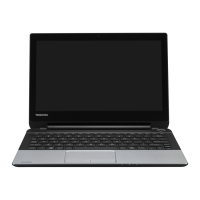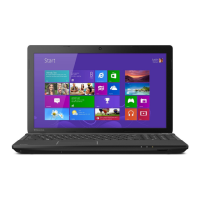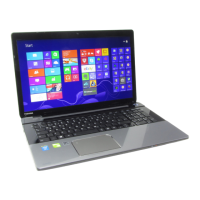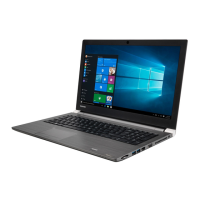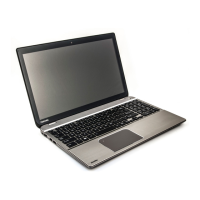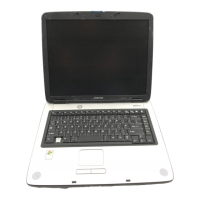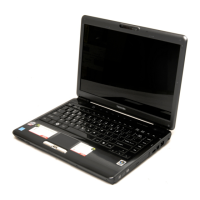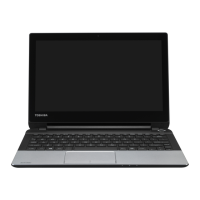
Do you have a question about the Toshiba Satellite NB10-A Series and is the answer not in the manual?
| RAM | 2GB / 4GB DDR3L |
|---|---|
| Storage | 500GB HDD |
| Graphics | Intel HD Graphics |
| Operating System | Windows 8.1 |
| Processor | Intel Celeron N2830 |
| Display | 1366x768 pixels |
| Weight | 1.3 kg |
| Wireless | Wi-Fi 802.11b/g/n |
| Ports | HDMI |
| Connectivity | 10/100 Ethernet |
| Sound System | Stereo speakers |
Details regarding regulatory compliance, including FCC and EU information.
Important safety precautions for using the computer, including ventilation and environment.
A list of hardware and documentation items included with the computer.
Basic steps for initial setup and operation of the computer.
Methods for powering down the computer, including Shut Down, Sleep, and Hibernation modes.
Identification of components on the front of the computer with the display closed.
Identification of ports and components on the left side of the computer.
Identification of ports and components on the right side of the computer.
Identification of components on the underside of the computer.
Description of internal hardware components like CPU and Hard Disk Drive.
How to use touch screen gestures like tap, press and hold, pinch, rotate, and slide.
Explanation of touch pad gestures including tap, two-finger tap, pinch, and scroll.
Information about keyboard layout, key types, and the CAPS LOCK indicator.
Explanation of battery types, use, recharging methods, and handling.
Information on connecting and disconnecting to a Local Area Network (LAN).
Capabilities for connecting external displays like RGB monitors and HDMI devices.
Description of pre-installed utilities and how to start them.
Details on unique or advanced computer features like power saving and password security.
Utility for setting up user and supervisor passwords to restrict computer access.
TOSHIBA configuration management tool for hardware settings and system options.
Creating recovery media and restoring the system from a recovery partition or media.
Guidelines for diagnosing and resolving problems, including observation and documentation.
Troubleshooting steps for unresponsive keyboard commands or frozen programs.
Checklist for hardware and system issues including power, keyboard, and display.
Troubleshooting AC power issues, checking adaptor connections and indicators.
Troubleshooting battery issues, checking the DC IN/Battery indicator.
Troubleshooting issues with the touch pad and USB mouse.
Information on how to contact TOSHIBA support for assistance.
Summary of the computer's technical specifications, including physical dimensions and environmental requirements.
Specifications and compatibility requirements for AC power cords and connectors.
Information on wireless technology interoperability for Wi-Fi and Bluetooth.
Definitions of terms used in the manual and abbreviations.
